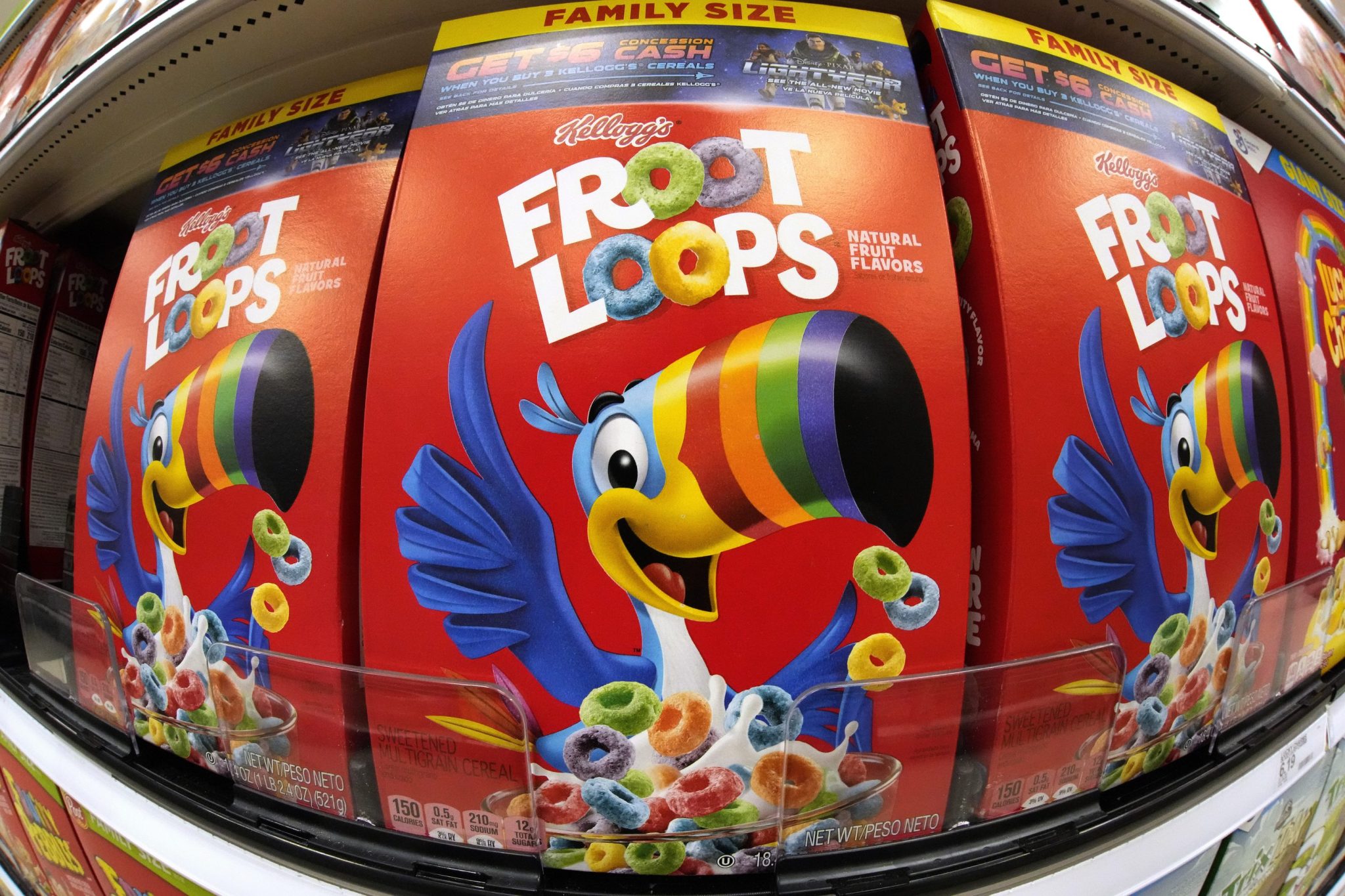Dozens of people rallied outside the Michigan headquarters of WK Kellogg Co. Tuesday, demanding that the company remove artificial dyes from its breakfast cereals in the U.S.
Kellogg, the maker of Froot Loops and Apple Jacks, announced nearly a decade ago that it would remove artificial colors and ingredients from its products by 2018.
The company has done that in other countries. In Canada, for example, Froot Loops are colored with concentrated carrot juice, watermelon juice and blueberry juice. But in the U.S., the cereal still contains artificial colors and BHT, a chemical preservative.
On Tuesday, activists said they were delivering petitions with more than 400,000 signatures asking WK Kellogg to remove artificial dyes and BHT from their cereals. Protesters said there was evidence that artificial dyes can contribute to behavioral issues in children.
“I’m here for all the mothers who struggle to feed their kids healthy food without added chemicals,” said Vani Hari, a food activist who previously pressured Kraft Heinz to remove artificial dyes from its macaroni and cheese.
The U.S. Food and Drug Administration says it has reviewed and evaluated the effects of color additives on children’s behavior but believes that most children have no adverse effects when consuming them.
Battle Creek, Michigan-based WK Kellogg became a separate company last year when its snack division was spun off to form Kellanova. Kellanova kept the company’s international cereal business; it now makes Froot Loops with natural dyes for markets like Australia and the United Kingdom.
WK Kellogg said Tuesday that its foods are safe and all of its ingredients comply with federal regulations.
“Today, more than 85% of our cereal sales contain no colors from artificial sources,” the company said in a statement. “We continuously innovate new cereals that do not contain colors from artificial sources across our biggest brands, offering a broad choice of nourishing foods for our consumers.”
Kellogg said it announced its plan to remove artificial colors and ingredients almost a decade ago because it believed customers were seeking foods with natural ingredients and would welcome the change. But the company said it found that consumer preferences differed widely across markets.
“For example, there is better reception to our cereal recipes that utilize natural-color alternatives within the Canadian market than in the U.S.,” the company…
Click Here to Read the Full Original Article at Fortune | FORTUNE…


